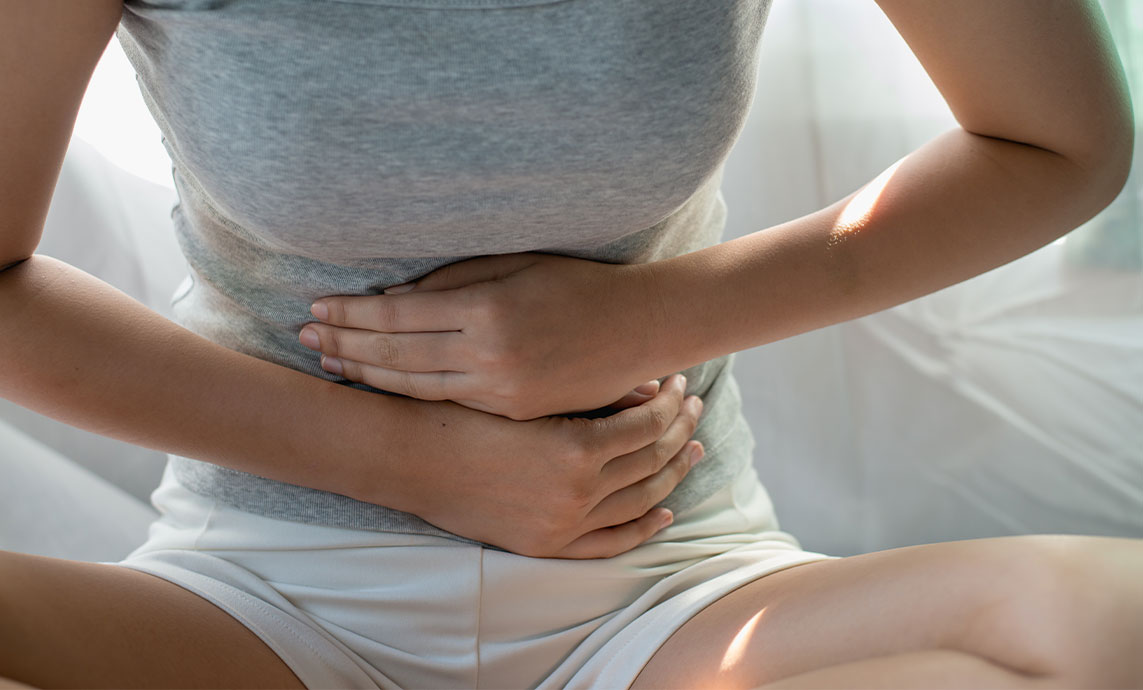The vast majority of women experience cramps that can range from irritations to major roadblocks to our daily lives. Read to uncover common types of period pain, what causes period cramps, and more.
Menstrual cramps are perhaps the most infamous of PMS symptoms. But that doesn’t make them any more fun to go through. The truth is, period cramps can change from day to day and month to month in their intensity and type of pain. So it’s natural to wonder, “What do menstrual cramps feel like?” and “Are my cramps normal?”
In this article, we’ll explore:
– What are period cramps?
– What causes menstrual cramps?
– When do period cramps usually happen?
– What do period cramps feel like?
– How much period pain is normal and safe?
What are period cramps?
Period cramps aren’t the same as a “Charlie horse” or cramps in other muscles. Period cramps (also called menstrual cramps or period pain) are essentially muscle contractions taking place in your uterus.
Research has found that as many as 84.1% of women experience period pain throughout their lives, with 40% of women reporting they have menstrual cramps with every period.
What causes menstrual cramps?
Cramps play a big role in the menstruation portion of your cycle.
First, a quick review → During menstruation, your body sheds the inner lining of your uterus and the egg that went unfertilized during ovulation, along with other tissues. The goal: To prepare the body for your next cycle and clear the way for fresh resources.
A hormone-like chemical called prostaglandin increases to help detach the uterine lining and clear out these tissues and blood. Prostaglandin then prompts the uterus to begin contracting (tightening) and relaxing, helping to shed all of this old tissue.
When levels of prostaglandins become too high, contraction intensity increases, and, with it, period pain. This sort of prostaglandin-related period pain is medically called “primary dysmenorrhea.”
When do period cramps usually happen?
Period cramps usually begin with PMS, 1 to 3 days before your period starts. However, many women find that cramp pain peaks within 24 of the start of menstrual bleeding and slowly decreases over the next 2 to 3 days.
However, some women may feel period pain longer or may not experience it at all.
What do period cramps feel like?
Period cramps feel different for each of us. Not only that, but they can feel different day to day and across menstrual cycles. Over time, though, it will likely become easier to understand your typical experience of period cramps.
Here are some common descriptors of different types of period pain:
#1 Lower back and thigh pain
While most of us think of period pain as affecting our stomachs and lower abdomens, many women also experience pain in their lower back and/or in their thighs. You may also feel no cramps in your lower abdomen or only feel them in your back and/or thighs.
#2 Dull continuous ache
Many describe their period cramps like a heavy, dull aching, low in the stomach.
#3 Spasmodic, sharp, or stabbing pain
Period cramps can feel like sharp spasms of pain that ripple across the lower abdomen and/or feel tight for a few seconds before releasing.
#4 Gripping pain or pressure
Period pain can also feel like tension or tightness that sticks for a few moments before relaxing. It’s almost like you’re at the top of a stretch and it just becomes a bit too much.
How much cramp pain is “normal’?
The general guideline for cramp pain is, if you can get through your day — walk, talk, do your homework, chat with friends, and do your chores — odds are the pain is fairly normal. It’s when the pain becomes so overwhelming that you have trouble getting through your daily life that you might want to talk to your doctor.
So, we mentioned earlier that this first type of “normal” period pain is called “primary dysmenorrhea.” As the name suggests, there’s a second type of period pain called “secondary dysmenorrhea.” This classification of period cramps refers to all secondary causes of cramps, AKA those not directly related to your cycle.
It’s typically with secondary dysmenorrhea that you’re more likely to see abnormally high levels of pain.
Secondary dysmenorrhea can be caused by conditions including:
- Sexually transmitted infections
- Endometriosis (when the tissue inside the uterus grows outside the uterus)
- Cervical stenosis (when the spinal canal is too small, causing pinched nerves)
- Uterine fibroids (non-cancerous tumors that can grow on the uterine wall or inside the uterus)
- Pelvic inflammatory disease (PID) (may experience worse pain with movement, pelvic pain, and additional symptoms)
